well check
- Steph Turner
- Jun 9
- 7 min read
Updated: Jun 12
Need-response uses this downloadable tool to measure impacted wellness outcomes
Need-response holds all accountable to positive wellness outcomes. Armed with the knowledge that organic needs are inflexible, need-response prioritizes wellness outcomes over social norms.
Anankelogy recognizes how solving problems depends upon resolving needs. The less your needs can resolve, the greater your problem of diminished wellness. The more your needs resolve, the greater your wellness.
Wellness efforts like Public Exoneration aims to improve wellness by solving stubborn problems. The closer the wrongly convicted innocent draws towards exoneration, the more well they measurably become.
Need-response provides this free tool to gage wellness impacts on its wellness improving efforts. Click the button at the bottom to download your own copy.
Using thorough and brief measures
This tool utilizes thoroughly tested psychometric tests at the start and finish. But uses a simple test in between. This keeps it relatively easier to use.
Such measures lack full reliability. Self-reporting tends to lack accuracy because of inherent biases. But this tool adequately serves its purpose to hold wellness efforts accountable to measurable results.
The first page serves to display the results tracked in the pages below. The next three pages (in light green), along with the last three pages, check wellness using multi-item self-assessments. The middle pages (in light purple) simple asked how to self-assess the three measures.
Three measures
Many items could be assessed. Such as including one's sense of helplessness. Or the level of anger felt when wronged. But this tool aims to stay simple, for relatively easier use.
At the risk of becoming too reductive, this tool seeks to capture how one is doing by assessing three simple wellness markers.
Anxiety level. Self-assesses how anxious one is at the time of response. A persisting problem forces you to handle more than you're likely prepared to take on. And this can turn overwhelming.
Depression level. Self-assesses how depressed one is at the time of response. Any persisting problem likely robs you of energy. Solving such a problem can help you get back on your feet.
Addictiveness level. Self-assesses how addictive one is at the time of response. This moves beyond addiction itself. You could be repressing your addiction for junk food, and outward appear to be doing fine, but still be struggling with internal turmoil.
Holistic wellness
Need-response appreciate how the term "mental illness" serves as a kind of synecdoche. Which is a figure of speech that refers to something by referencing a part of it. For example, "boots on the ground" or a "hired hand".
What we call "mental illness" involves cognition. But thinking is only a part of wellness. If offered only bad options, your wellness inevitably declines now matter how good your mental processes.
Need-response involves more than the thinking you can control by addressing areas your thinking cannot control. It uniquely looks at the whole of a situation that reinforces a problem you face. It aims to address a problem at all of its levels.
Page by page
The image on the left shows you the empty tool. It includes a sample tab, which you can see here on the right.
Page 1
The initial page is completely for show. No white fields to enter any data. The table and chart evolves as the data gets entered in the pages below.
Page 2
The tool captures a baseline of your anxiety level. It uses the well established "GAD-7" psychometric tool. That stands for General Anxiety Disorder - Seven. That means it only has seven items to answer.
After filling in all the white fields, using the dropdown lists, it kicks out a number, which gets posted in the table on the first page. And moves the red line on the chart.
It's okay if that number is relatively high. The higher that first number, the more significant the improvement you will see as we proceed into the program.
The text below the Wellness update heading also changes. This includes a line that states how your self-reported anxiety can be characterized in mental health terms. For example, if your number is significantly high at this point, then you present yourself with "severe anxiety".
NOTE: This data qualifies as personal health information protected by law. We are prohibited from sharing it without your permission. However, you agree by your participation in this program to allow us to share it publicly without any links to your identity, as permitted by law, to enable us to demonstrate the program's effectiveness.
Page 3
The tool also captures a baseline of your level of depression. It uses the well established "PHQ-9" psychometric tool. That stands for Patient Depression Questionnaire - Nine. In addition to its nine items is a tenth item to consider if this amounts to major depression.
After filling in all the white fields, using the dropdown lists, it kicks out a number, which gets posted in the table on the first page. And moves the blue line on the chart.
The text below the Wellness update heading also changes.
Page 4
Finally, the tool captures a baseline of your addictiveness. I could not find a freely available psychometric test for this one. Using my academic skills, I crafted my own, based on key symptoms of addictiveness.
The text below Wellness update explains how "addictiveness" is distinct from addiction itself. You can suppress your addictions and still present addictiveness. For example, you can stop indulging in viewing porn but remain obsessed with the imagery in your imagination.
Gaging your level of cravings points to how you struggle to cope while burdened with an unsolved problem. As need-response helps you solve that problem, we anticipate your obsessive cravings will naturally decrease.
Page 5
After the baseline measures at the start of the program, you wait until directed to move onto these purple page simple measures. You will be informed when you hit a program milestone and when it is time to check how your wellness has improved or not.
Once the need-responsive program proceeds, you simply respond to a single item for each of these three wellness markers. You rate how much each affects your life at the moment.
It's overwhelming my life
It's consuming my focus
It's a concerning problem
It's at a manageable level
I don't feel it all
We expect these to improve significantly after the program helps you develop your need-response orientations.
After responding to all three items, you get a percentage number that gets reproduced in the table and chart on the first page. And the text below informs you how the current levels compare to your last self-reported levels for each.
Page 6
Each of these purple pages covers two milestone measures. When informed you hit the next milestone, simply answer in the same way.
After responding to all three items, the same kind of results appear as before. Scroll to top page to see how the graph moves.
Page 7
When indicated, you continue to assess your level of anxiety, depression, and addictiveness.
When you scroll back to the chart on the first page, you may find midway through the program that your wellness seems to regress. No need for alarm. This is natural. A few steps forward often includes a momentary step back.
Page 8
As you wrap up the program, we anticipate your wellness significantly improves. As you draw closer to solving the problem, you naturally have less reason to feel intensely anxious or depressed. As you suffer less emotional pain, your addictiveness can decrease.
You may continue to still suffer some anxiety, depression and addictiveness for other causes. But your overall levels drop as this major problem finally gets properly addressed.
Page 9
When drawing the program to a close, you return to answering the same items as given in the baseline measures.
The text below, under Addressing your wellness needs, speaks to how solving your problem should improve your wellness. For example, as we increase your chances for exoneration from a wrongful conviction, you would naturally feel less anxious, less depressed, and less addictive.
Page 10
Just as you did with the baseline measures, you answer these ten items the same time you rate your anxiety.
This time, the score you get after selecting the last dropdown list level should be significantly lower than your number from the baseline score. If not, the program may not be working for you. Or you are burdened with other problems that require your attention.
Page 11
You wrap up your self-assessment by answering these same five items as before. If you can honestly self-report a significant drop in your addictiveness, then the program can be rated as a success!
Below the header Addressing your wellness needs, the text changes to a final report. You see your baseline scores compared to your final self-abasement for these psychometric tests. Scroll back to the top and see how this gets illustrated in the chart.

If the program helped you to solve your problem, all three wellness levels should steadily decline. Not necessarily in a direct linear path. Some ups and downs can be expected.
For example, if you are a wrongly convicted innocent and now receive broad support to be exonerated, or you are now exonerated officially, you naturally feel euphoric. Little if any anxiety or depression remains. Your addictiveness fades away. Life is now much better!
Sharing the credit
As you improve, you share the credit with your sponsors. They demonstrably helped you to solve your problem. They earned legitimacy through demonstrably helping to improve your wellness levels.
You helped your team gain more meaning in their lives. They developed new skills and new understanding. They improved their need-response orientations to help you, which ultimately helps themselves and their other relations.
Most importantly for you, you are now better off than you were when the program started. If not, then perhaps another program is needed to address whatever problem hinders your full wellness.
Download your own well check tool
Need-response honors the widespread belief that individuals should be able to improve their wellness on their own. But sometimes that is not enough.
We all face problems beyond our individual control. Some of those problems involve people in positions of authority. And you can find yourself trapped in social norms that get in the way of solving your problem. That is what need-response is for.
If you are in a need-response program now to solve a problem to improve your wellness, then you can download a copy of the well check right here.
If you need a paper copy to send to someone without free access to a computer, such as an incarcerated wrongly convicted innocent, then you can download this PDF version, print it out, and send it to them.
When working in unison with a need-response program, like Public Exoneration, we continue to mutually resolve needs to solve problems. Then trust our wellness levels to measurably improve as a result.
This tool helps keep us all accountable, including those in powerful positions. Together, let us improve everyone's wellness by supporting everyone to resolve their needs.
In other words, let's honor the needs of others as our own. Let's accountably love one another into greater wellbeing.
.png)
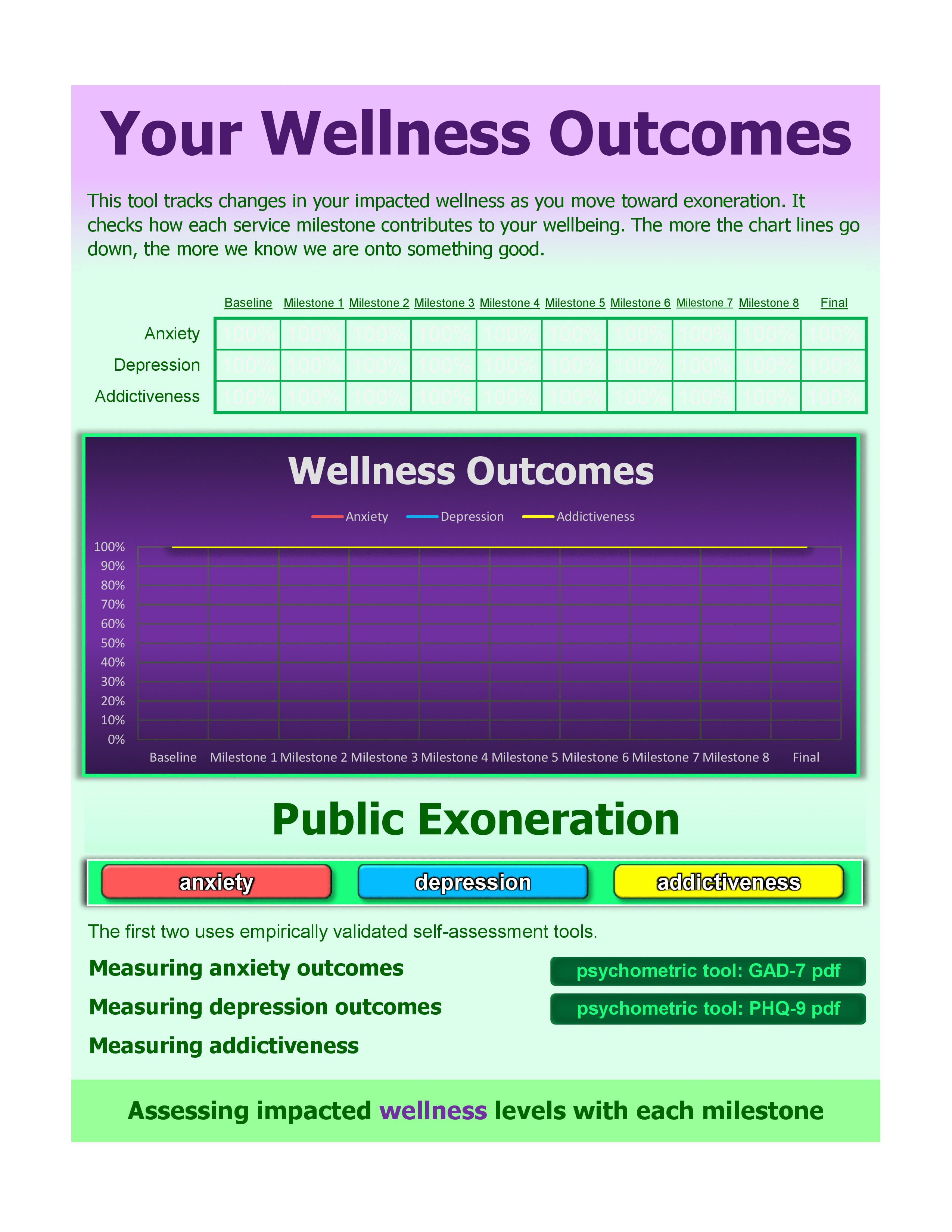





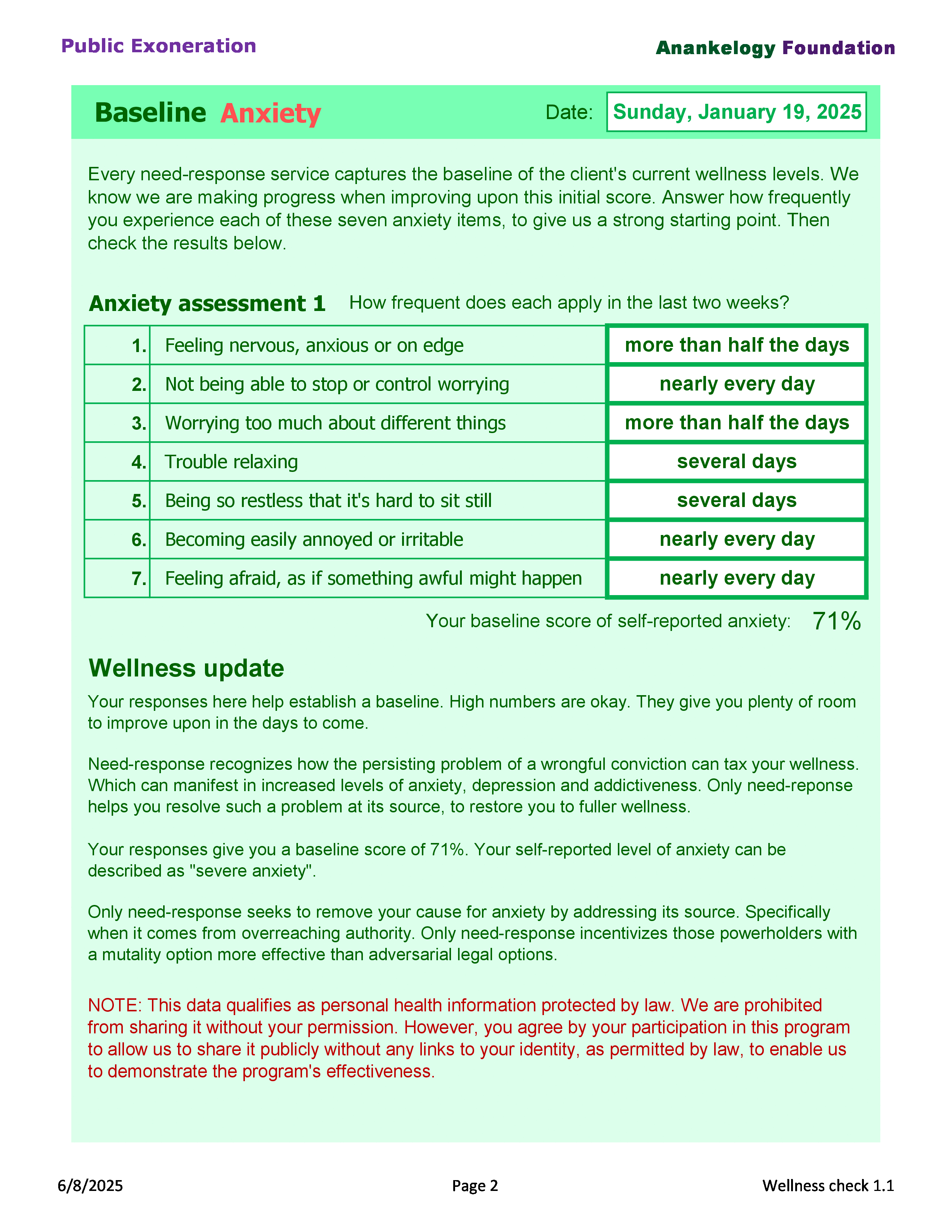
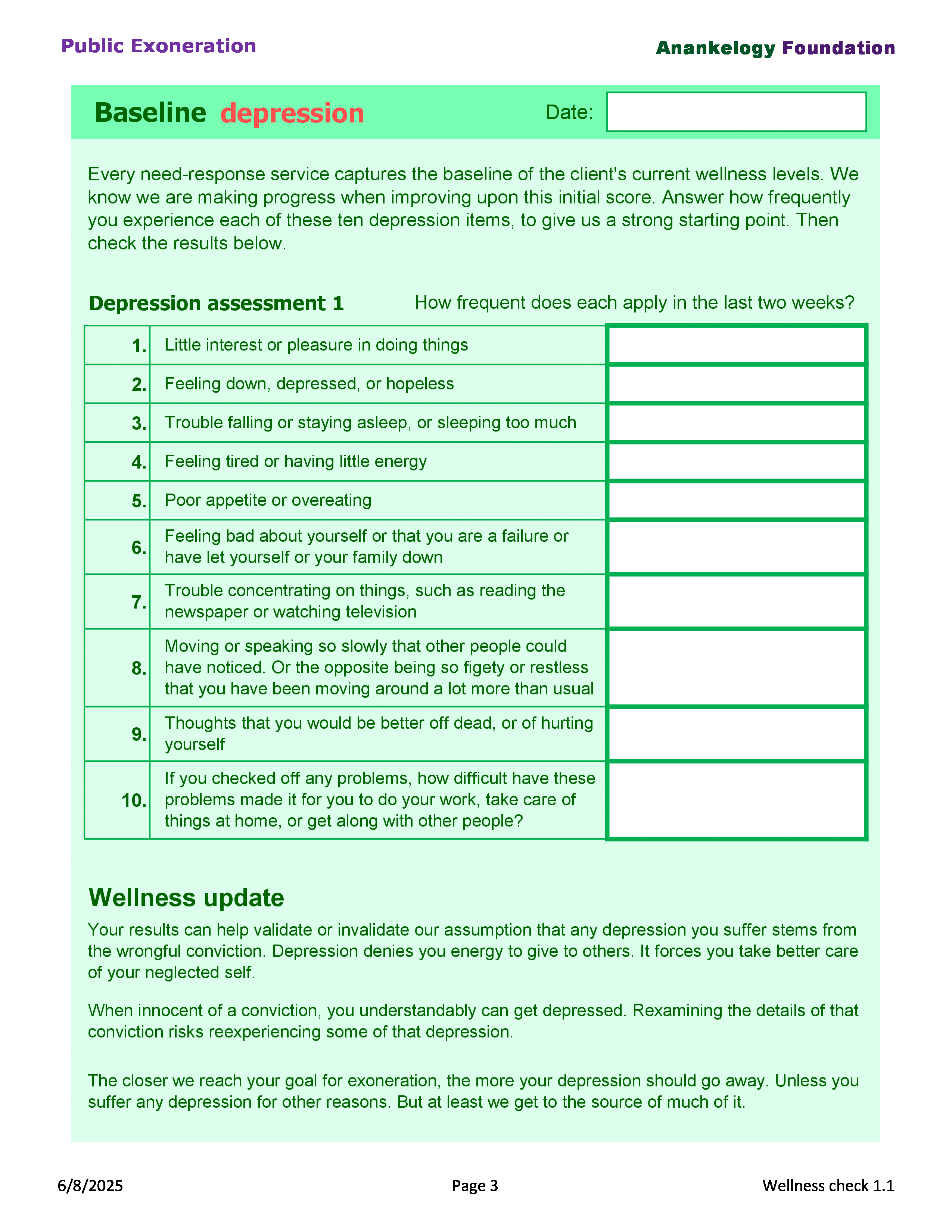

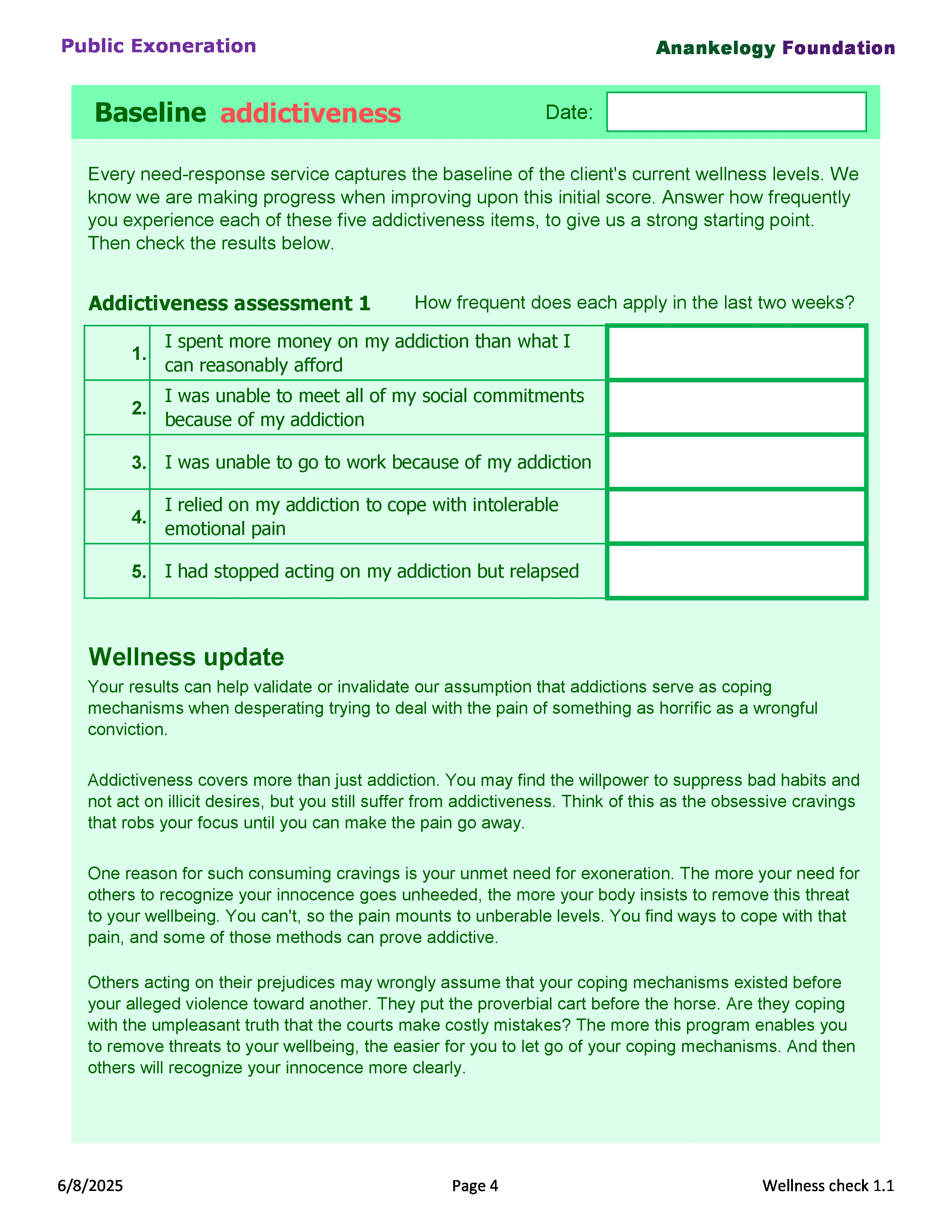
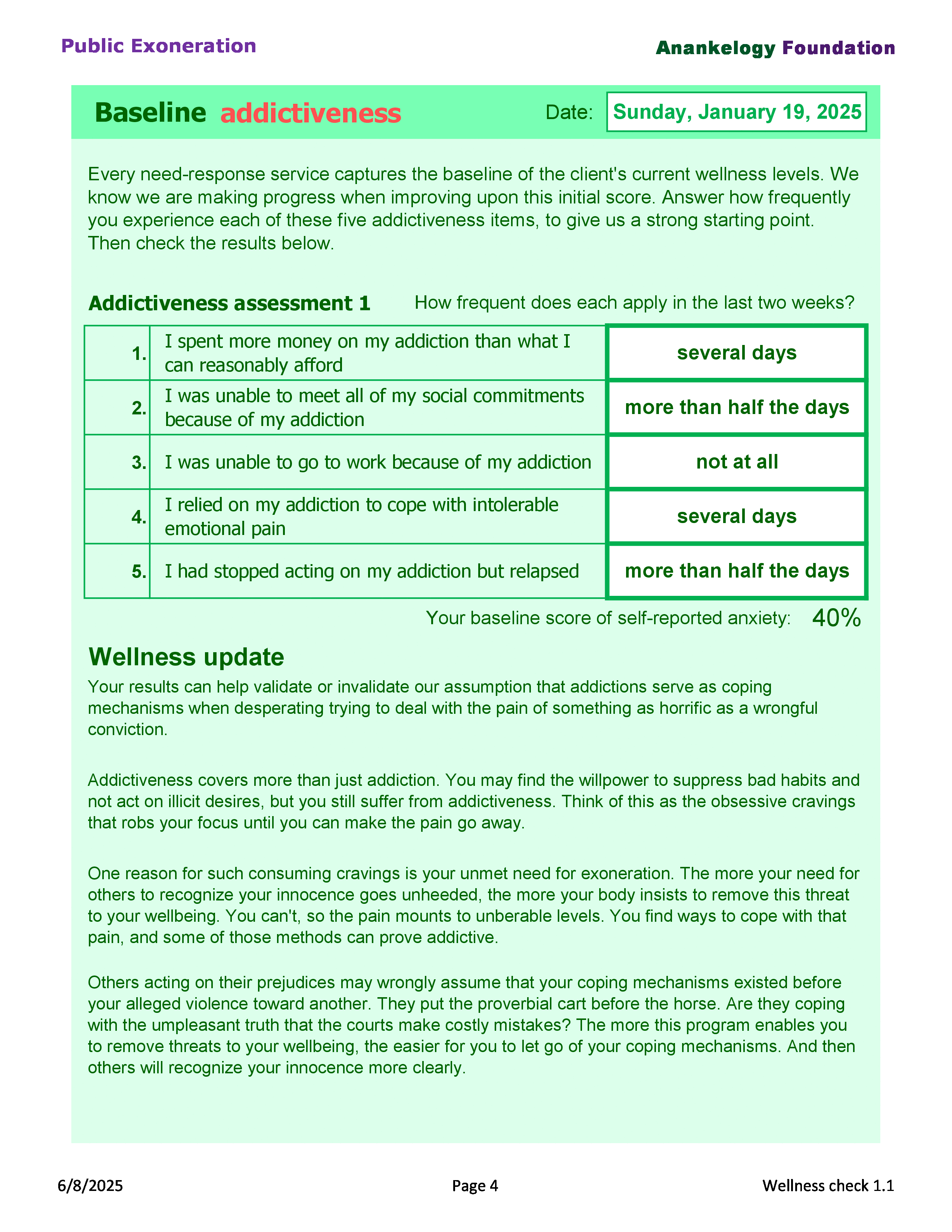
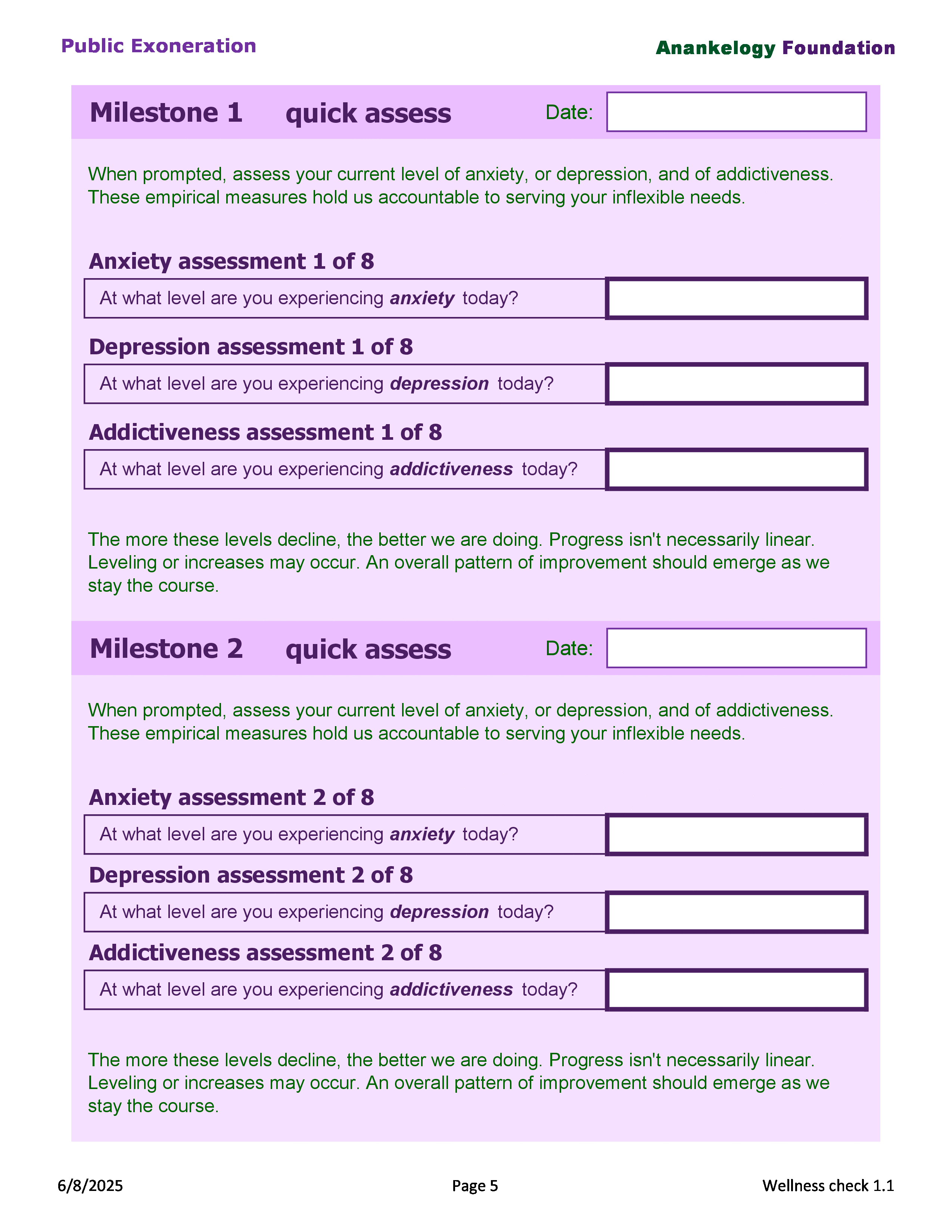
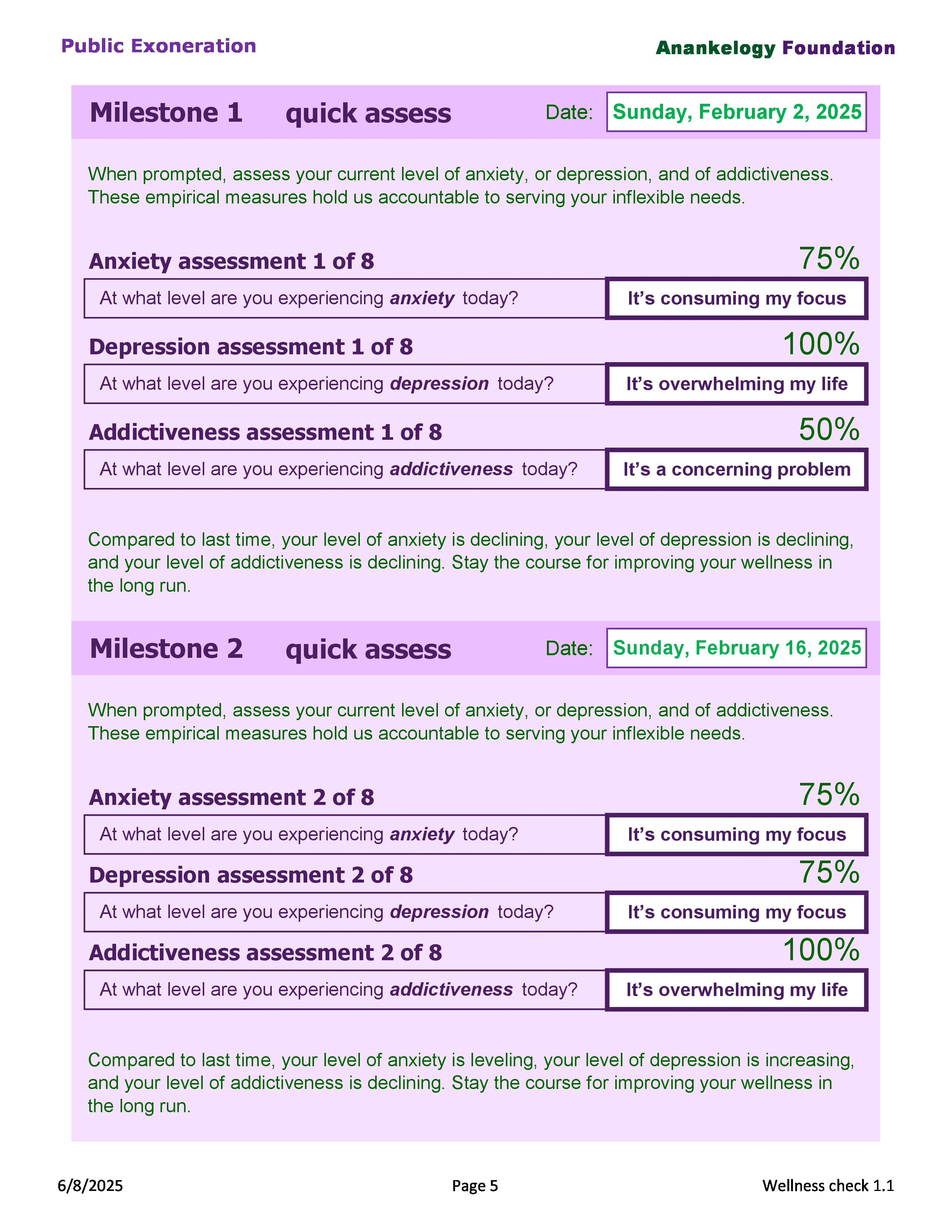
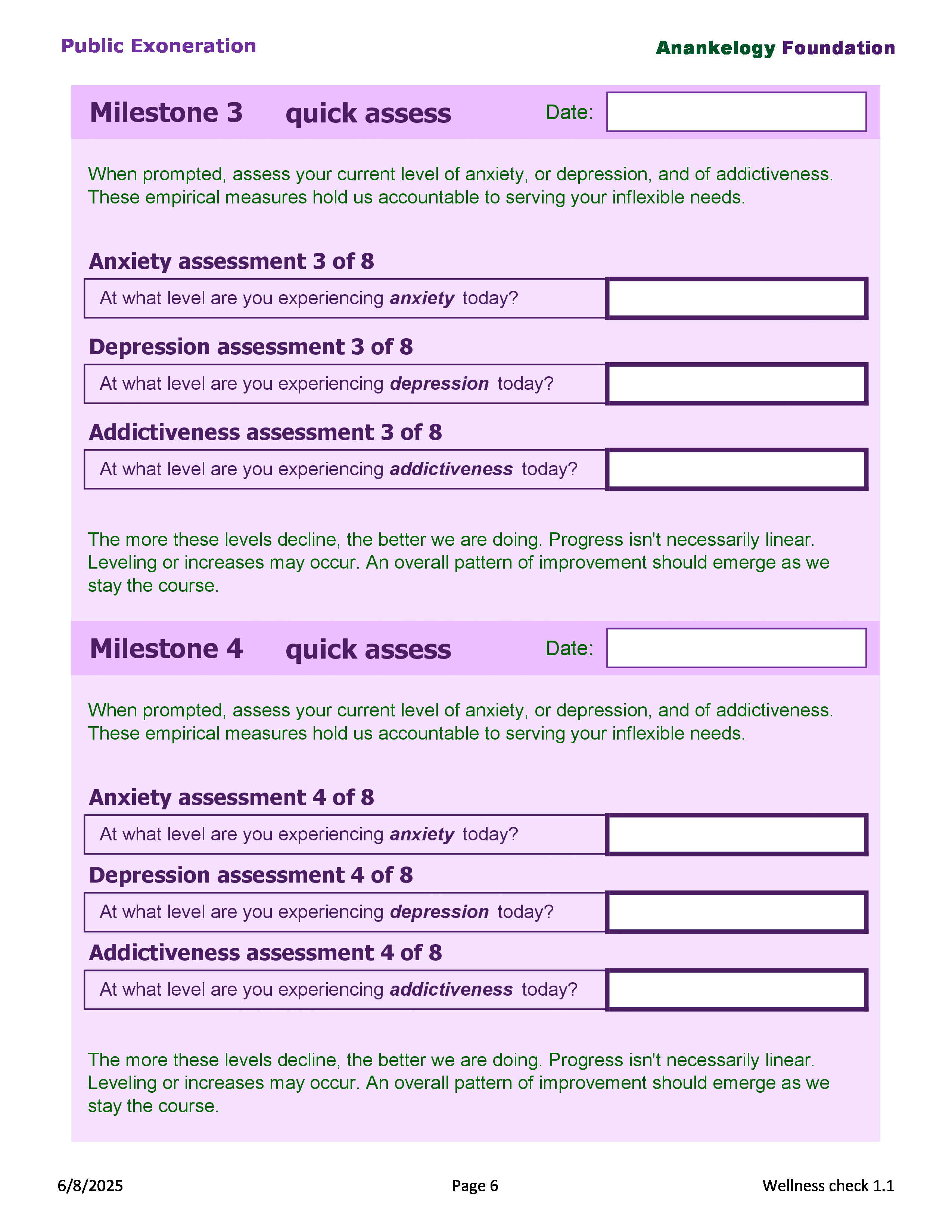
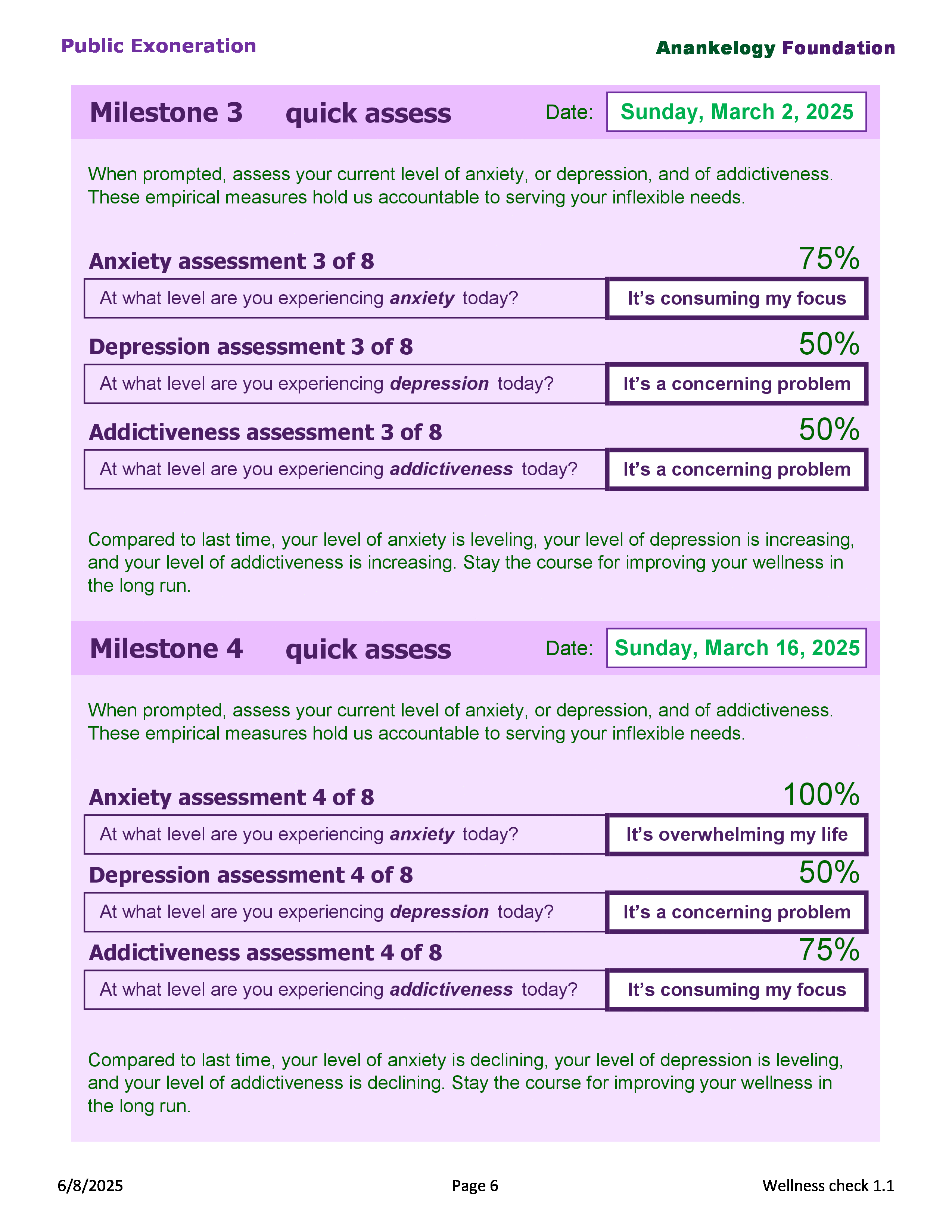
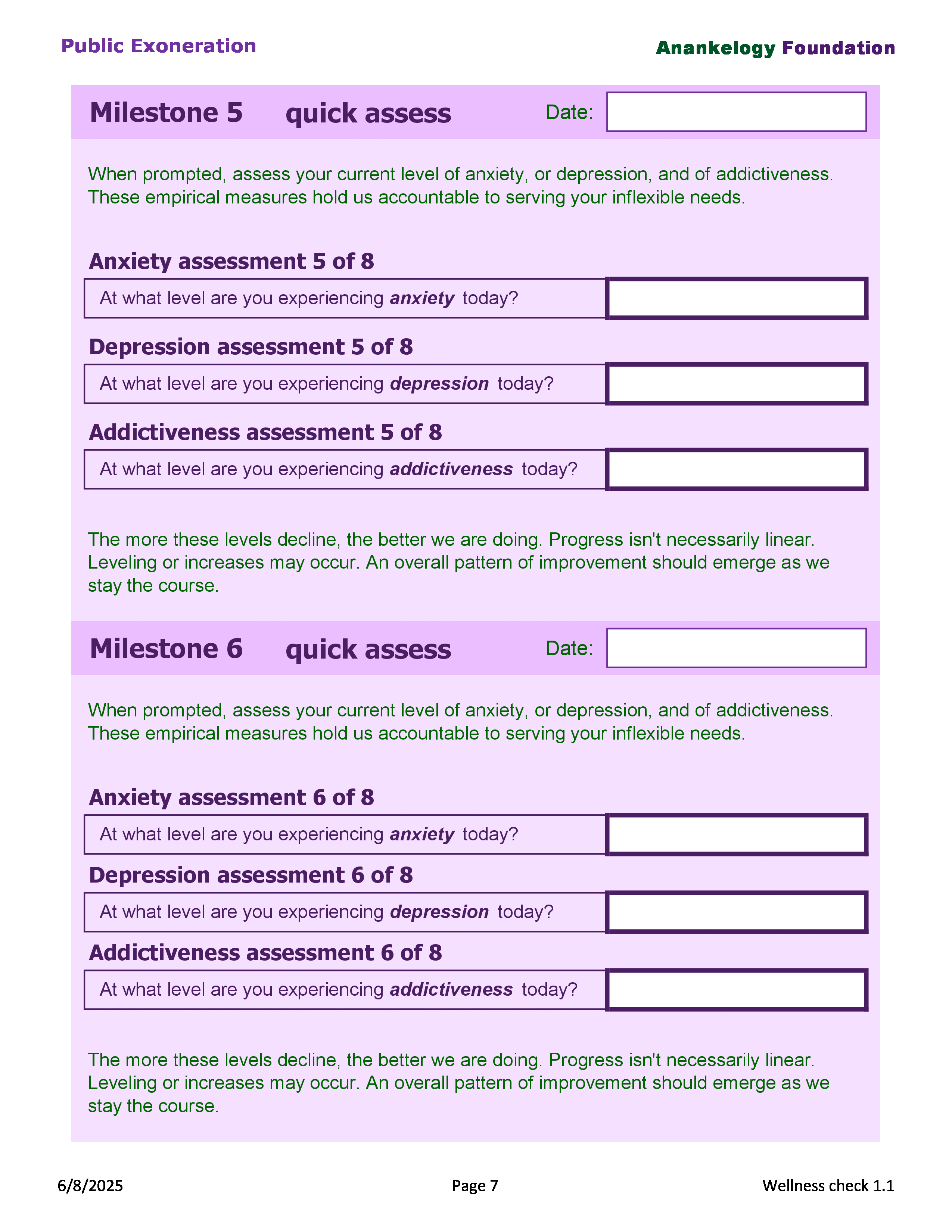
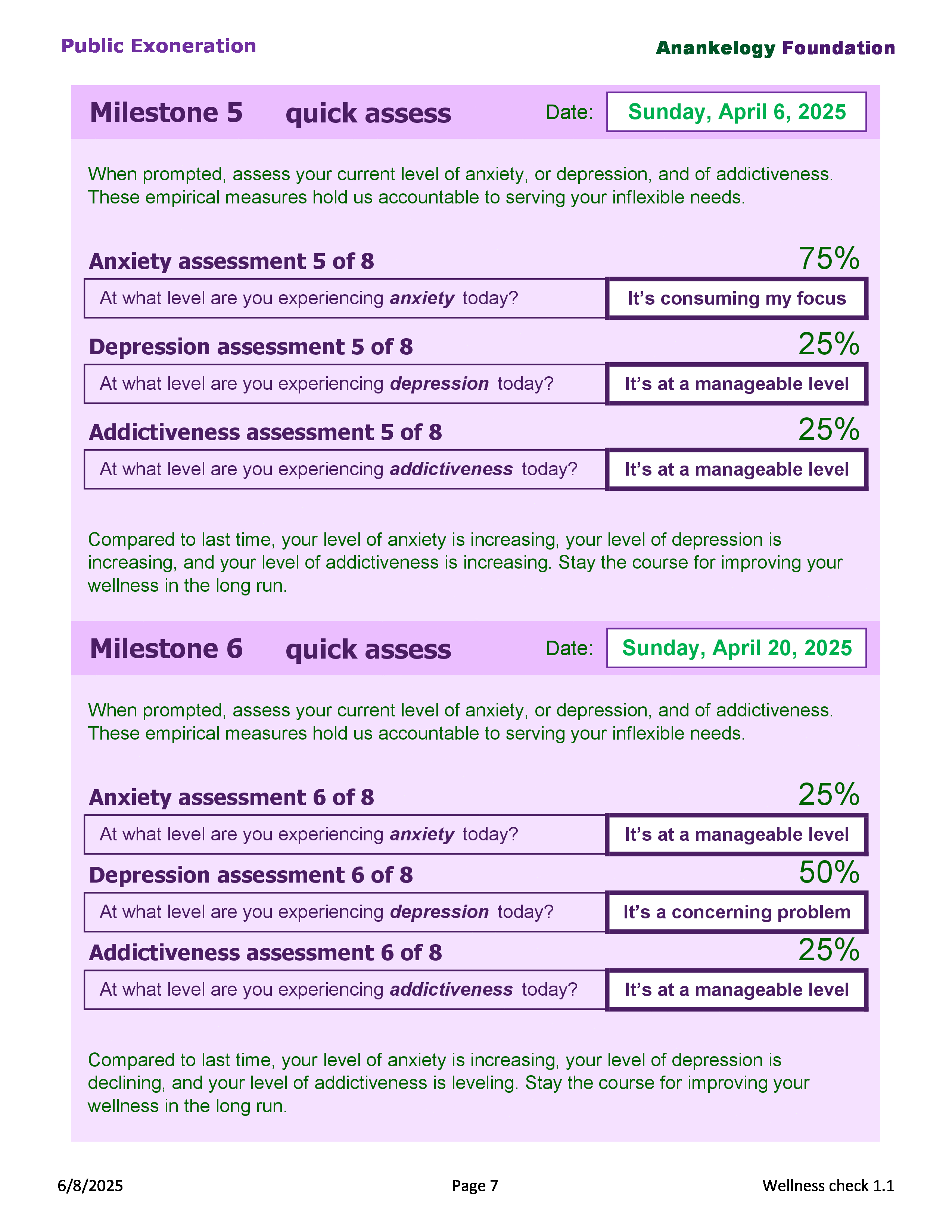
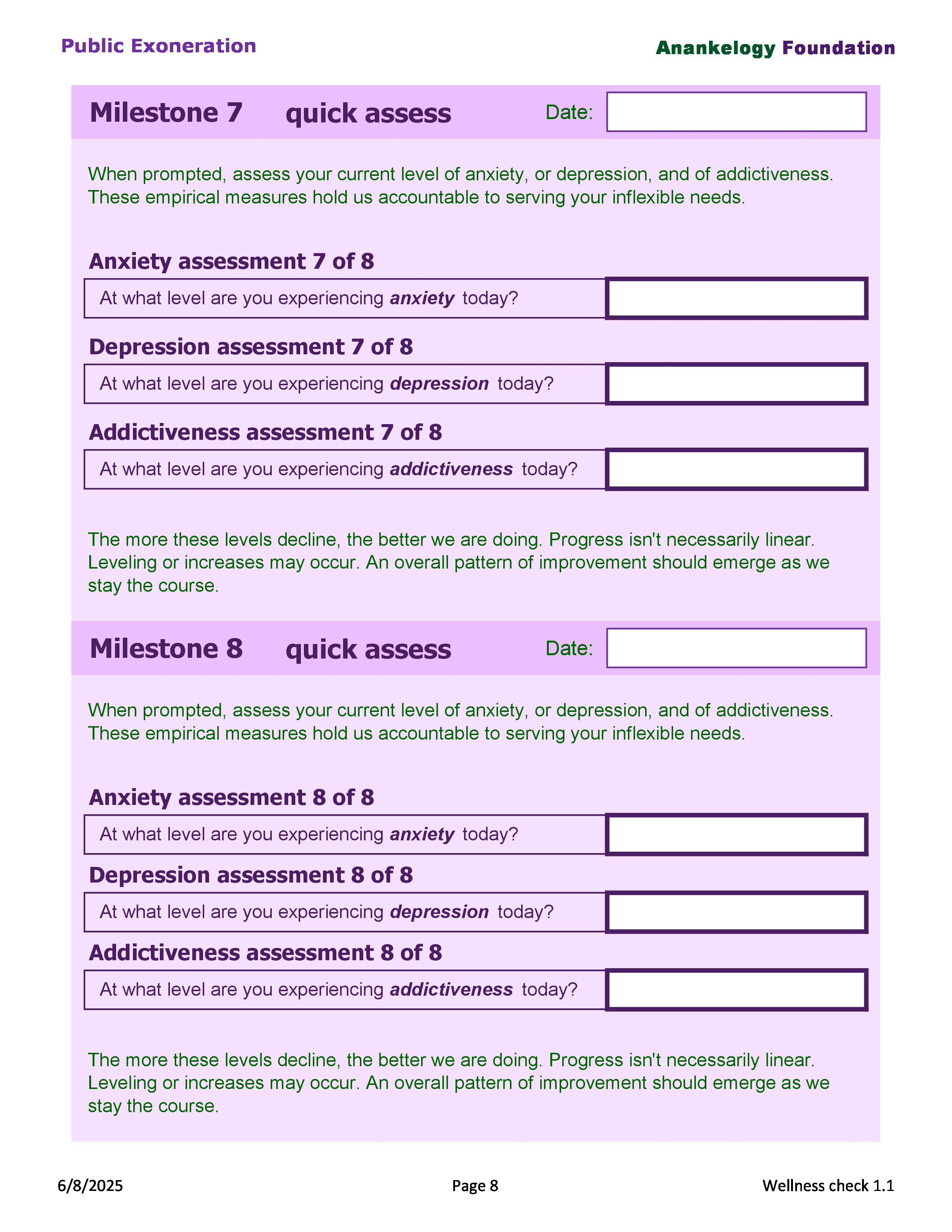
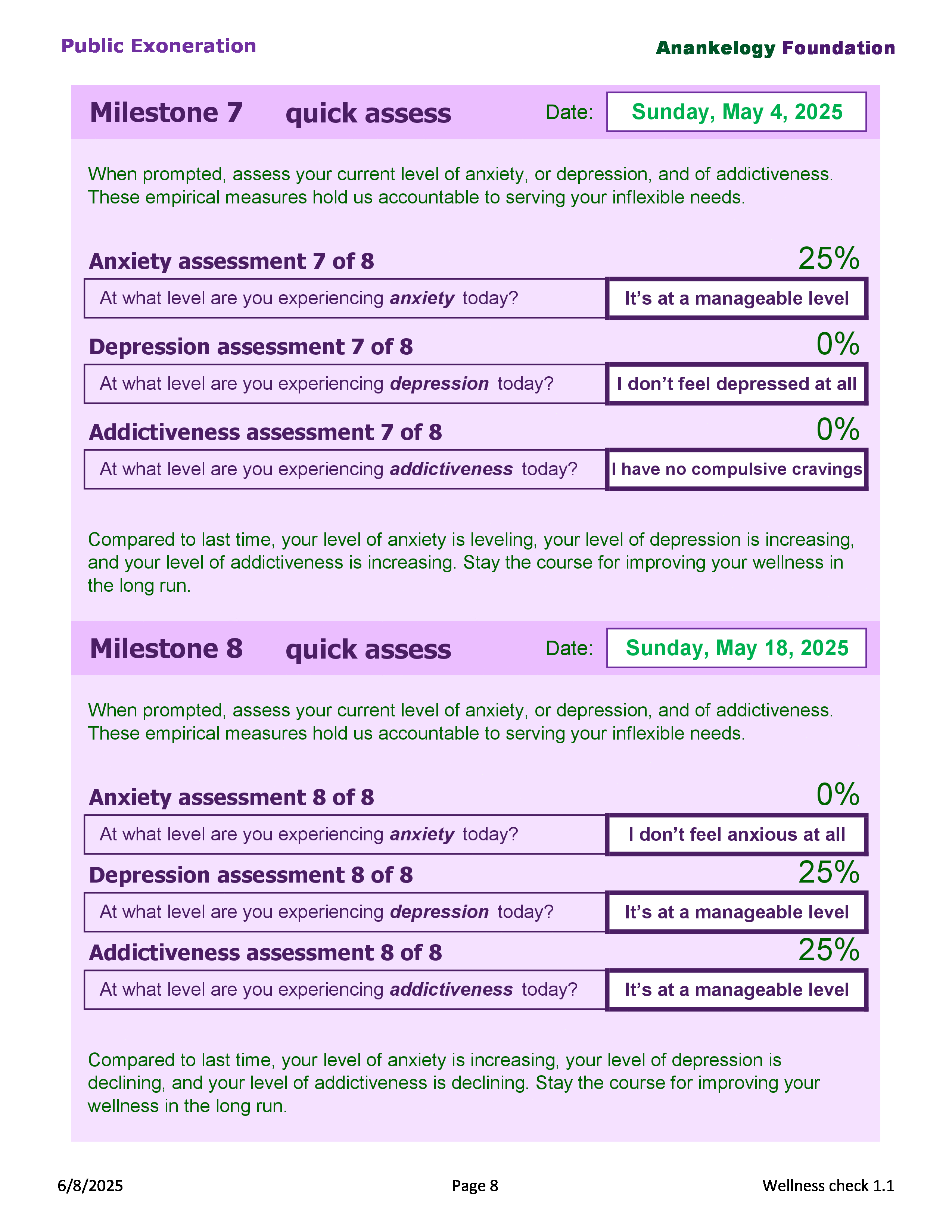
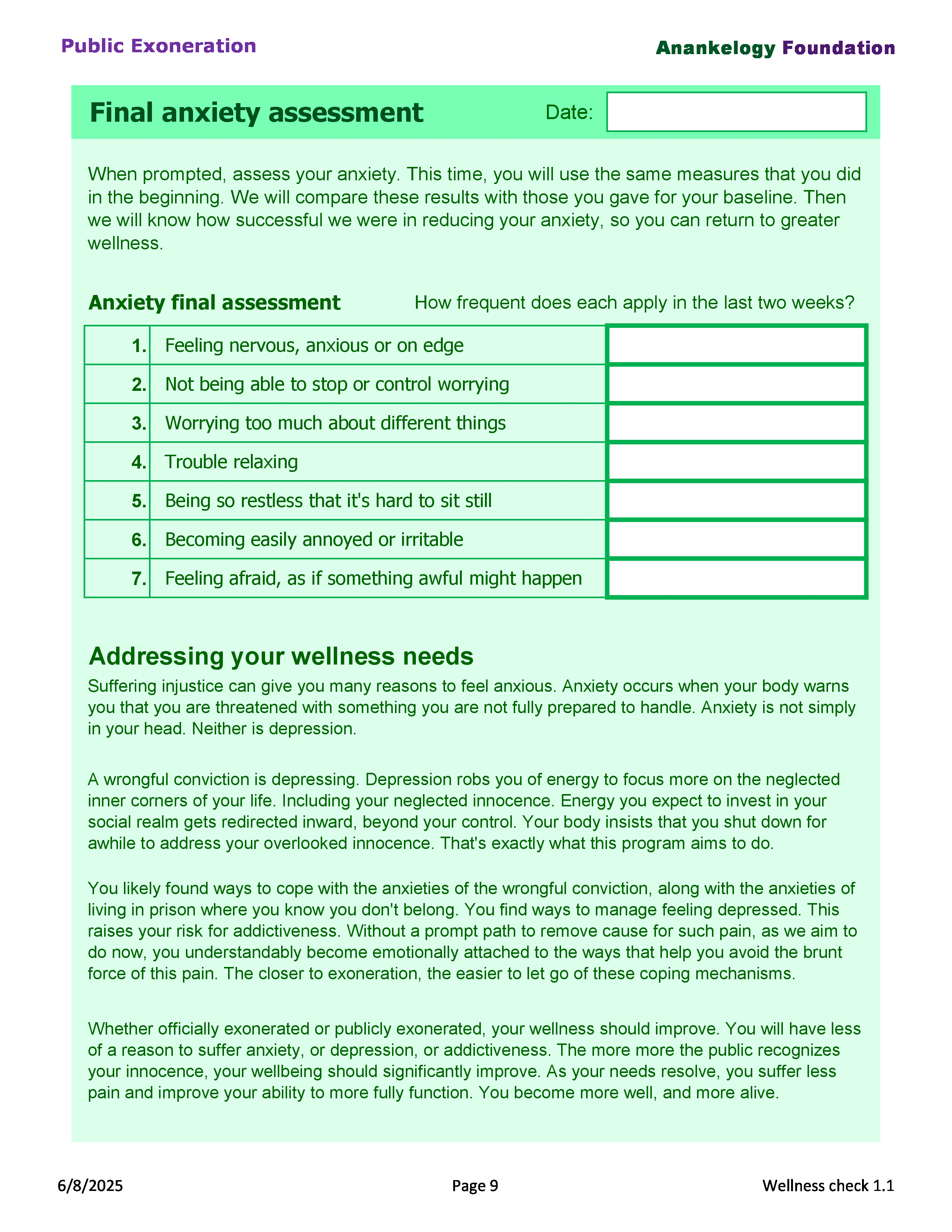
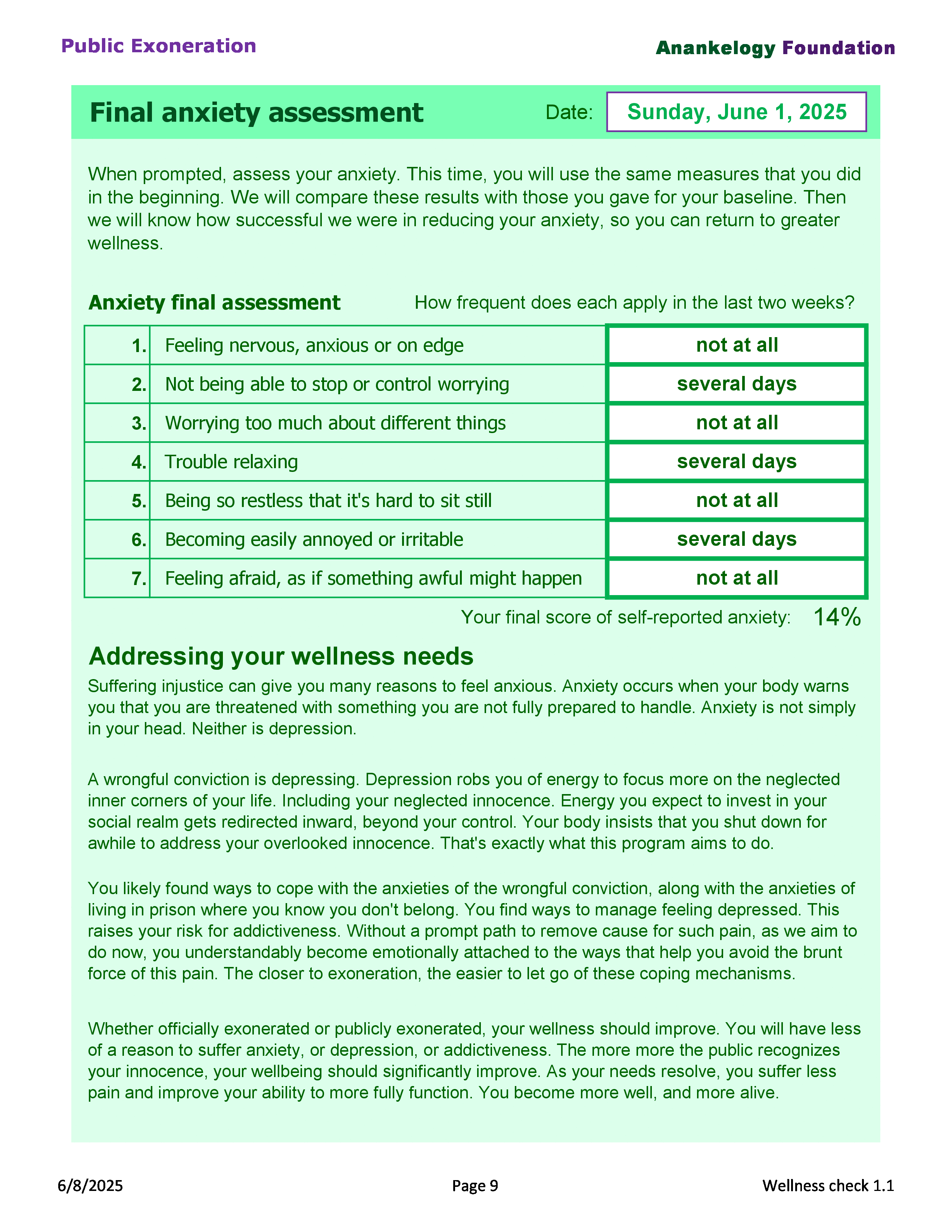
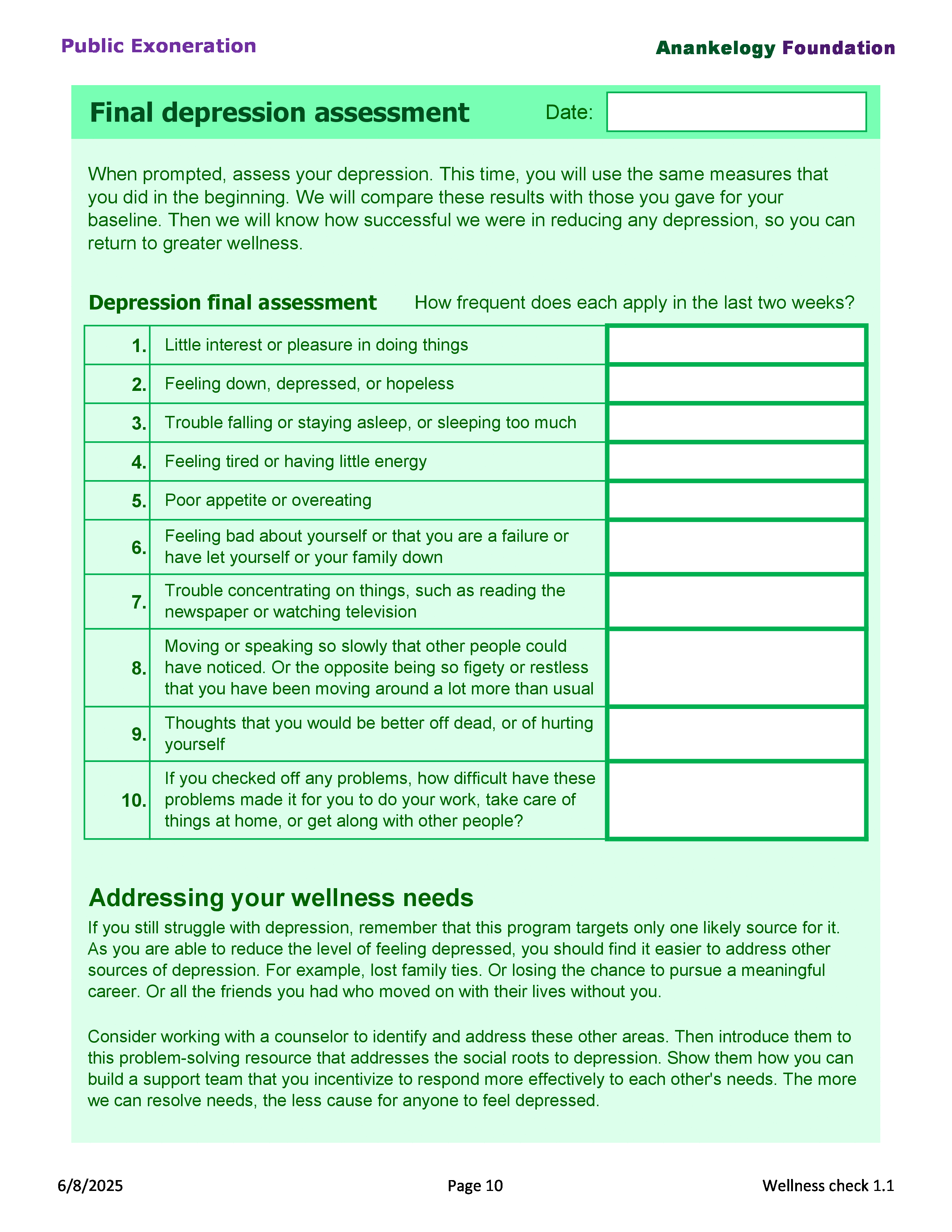
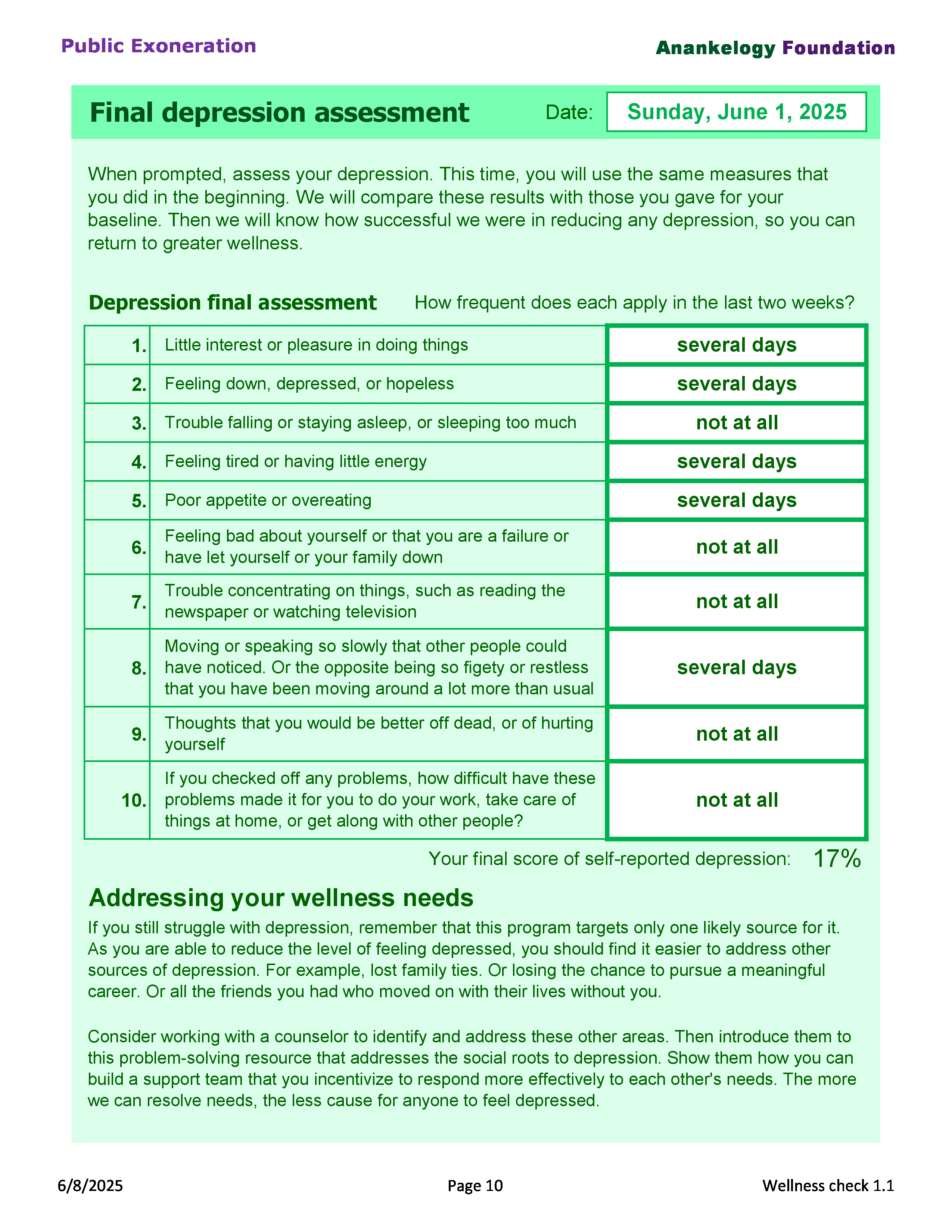
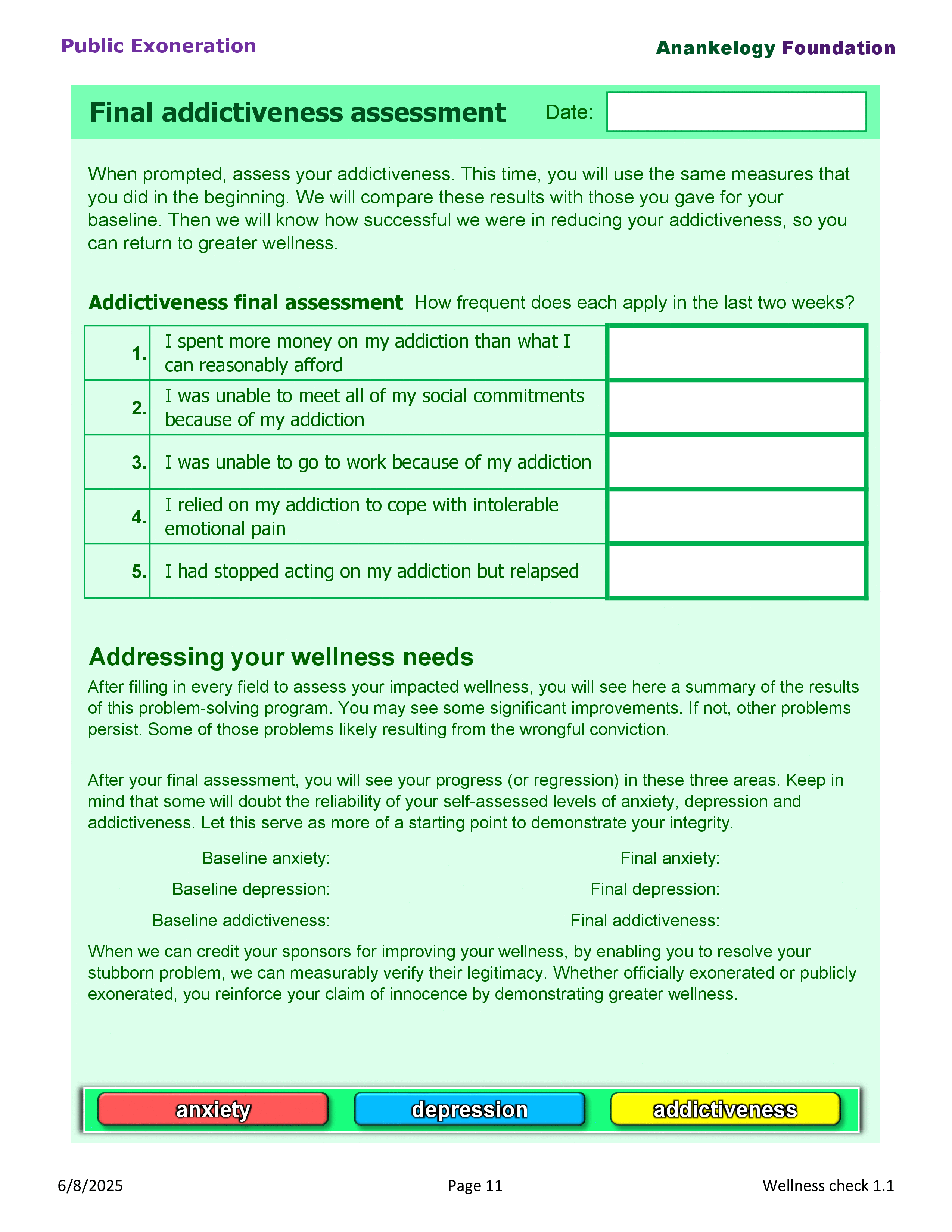
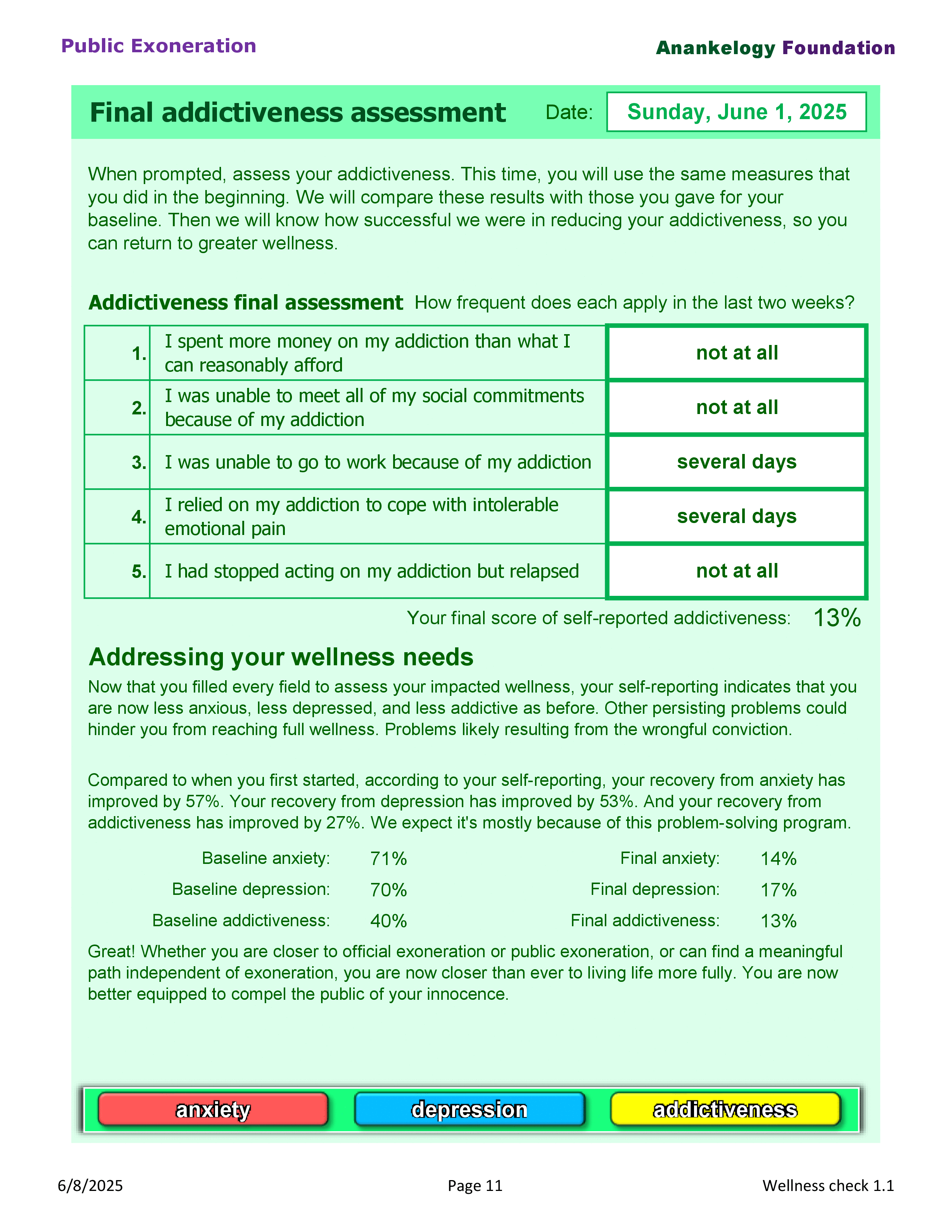
Comments